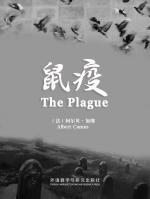鼠疫书评
南京一枝fa
After reading bubonic Plague, I felt that reading this book at such an
extraordinary time could make me more deeply resonate and understand the
panic, fear, yearning and joy expressed in the book. In camus's, both
the art of literature, there is also a philosophy thinking, irony and
criticism, in a drab gentle tone to describe the epidemic, with calm and
insipid tone to mimic "god of plague" dangerous, interspersed
with different characters in the face of the outbreak of psychological
change, people in different periods of epidemic status and reflection,
through the description of the environmental to reflect the different
period in the city people's mood and epidemic situation, and the main
characters in the urban, lang, bell tower, Mr Richard lu old castel
various plot of fighting athel loren, calm and deep. "The terrible
days of the plague did not seem like an endless and cruel flame, but
like an endless and heavy tread, crushing everything in its path."
The book begins with the introduction of the small city of Olan, a
featureless place with no sky, no birds, no trees, no gardens. The
people of the small town lived and loved business, and their cavalier
attitude to life made them initially despise the epidemic. From the
moment Dr. Rieux saw the first mouse in the hall, the god of plague was
in the path of the people of the town, until the death of the doorman,
people began to panic, began to pay attention, "from this moment,
people began to feel fear, began to think." "A mouse dies on
the road, a man dies in his house, and the newspaper only CARES about
the road." A very realistic satire of the media's cover-up of the
epidemic. The city was overrun with rats, with dying and dead rats
everywhere. The author USES a lot of ink to describe the psychological
state of people after the closure of the city, the separation of
affection, love and friendship. And Lambert, who misses his lover and
desperately wants to leave, but in the grand scheme of things, no one is
an exception. "In the sweltering skies, the roar of plague beat the
rhythm of the footsteps of millions of men moving painfully." The
plague had taken away hope, passion, and feeling, leaving the city with
a sultry weather and a gloomy atmosphere. The doctor and his friends had
been working day and night at their posts, and exhaustion had swept over
them. "Now every day is the Day of the dead, a sad fact." In
December the cold did not drive away the pestilence, and the epidemic
spread again. "The whole city lived a hopeless life." Rats
have reappeared in people's lives, but the data suggest that the
epidemic has abated. On the night of January 25, the epidemic was
declared over. All the houses were lit and everyone was happy. People
were finally liberated and escaped from the plague. On a fine February
morning, the gates opened. The exilic mood of the people of Oran
vanished in jubilation. So that's the end of the plague narrative. Dr.
Rieu spoke as a witness, which is why the author has been able to
describe everyone's psychology in such a vivid way.




 京公网安备 11010802032529号
京公网安备 11010802032529号